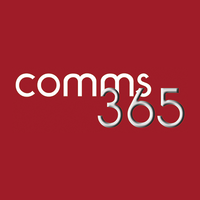Many technology commentators have talked about data as the ‘new oil.’ In the wake of fallout from the current epidemic, data might also come to be viewed as a utility – like electricity, water and broadband; a vital resource essential to shaping, supporting, securing and optimising, all life.
Through the rapid growth of Internet of Things (IoT) deployments, organisations are capturing more data than ever before. But there are still a number of questions around the use of data that need clarity. What is the value in the data? How can it be made available and used effectively to benefit all stakeholders – councils, citizens and businesses? How can it be monetised, if at all?
In light of GDPR and the post-COVID-19 landscape, this is a highly topical area. As IoT sensor deployments are expanded in smart cities, utilities, hospitals, schools, agriculture, transport networks and many other places, Nick Sacke, head of IoT and products at Comms365, explains that stakeholders need to fully understand how to integrate these new data sources into existing data platforms and get the most value from it.
Mining the data lakes
The use of IoT adds additional data streams from new devices, environments and processes that organisations have not previously been able to connect to or explore. That data can be treated as a standalone asset in the proof of concept phase, but the ultimate objective is to combine it with other data to create ‘data lakes’ that can be dissected and utilised. Yet, while many organisations and entities such as local authorities are collecting this data at pace, they are yet to mine that data effectively, examining it to generate new information and maximise its true value.
As more IoT projects are deployed and mature, vast volumes of data points, potentially in the billions, will be added to existing repositories. Data is amassing at a significant rate and this data will be valuable and useful to organisations and citizens. Some data may be designed to be collected and actively shared with third parties, to aid decision-making for communities. An example of this is in smart city infrastructure – town planners, construction companies, utilities, public enquiry, service providers, amongst others may want access to particular data for planning, building, or to improve service offerings.
On the other hand, there could be conflicts in sharing data widely as IoT rolls out. For example, there may be an increasing number of data points measuring climate and pollution, but that could reveal data on a city’s rising CO2 levels which results in the city being held up to scrutiny and fined. Measuring air quality levels has now become a top priority as the linkage between exposure to pollution and susceptibility to the effects of the new ‘mega-viruses’ has been established. The balance of data insight versus the potential societal and commercial impacts could become a complex issue to manage.
But first, the data has to be mined and structured in a way that it can be used, so there must be a system in place around who has permission to use that data. Is the data available for free or on a commercial basis? Or is the data confidential and strictly for internal use only? Recent developments with the opening up of track and trace data during the Covid-19 epidemic has overridden GDPR concerns – will this become normal practice to ensure health for our city populations?
There is a lot of education going on in the public sector about how to use data, hiring data scientists versus using third party resources, how to assemble the tools to make that data mining effective – getting the right expertise on board is crucial. Asking the right questions and defining the queries for the datasets is also important.
There is little value in collecting increasing quantities of data if you don’t ask the right questions to gain the most insight from it. Benefits of utilising an IoT platform to process data include powerful analytics and visualisations that deliver trend analysis and even return on investment (ROI). These tools and visualisations can be customised and personalised to individual departments and stakeholders.
Securing data flows
When it comes to implementing a network infrastructure for IoT, security is a priority. For many IoT deployments, a combination of public and private data sources will need to be used, but how will the data flows be securely managed? Some of the data will be related to mission critical infrastructure and operations (such as traffic flows, energy and water infrastructure).
Public domain or ‘open’ data published by central government, local authorities and public bodies includes environment (weather, flooding, air quality), transport (airports, roads, electric vehicles, parking, buses), towns and cities (housing, urban planning, leisure, waste and energy), Education, Health (hospitals, medicine performance) and others.
This is where middleware is required that can effectively segment the data network and prioritise appropriate traffic, enabling data to be routed correctly and efficiently to the right repositories and analytics engines. The more data that is amassed, the more the challenge will increase. A comprehensive data strategy is required that not only encompasses the variety of sources of data but also the routes and collection methods whereby the data is brought in.
Addressing cultural concerns

Culture continues to be a significant barrier to adoption when it comes to IoT deployments. The idea of 24/7 monitoring or corporations accessing our personal data makes people nervous. This is primarily due to the unknown facts about what happens to that data and the question of who ultimately owns it? Without insight into this, and how data can be used in a positive way, the automatic response to data being recorded and used is an initial degree of scepticism.
The good news is that IoT data is collected and delivered in an anonymised, secure format. This data is decrypted, collated, analysed and integrated with other datasets as part of a tracked process. The data composite is used primarily to provide an overall picture and to track trends and changes, as compared to personal data collected by an eCommerce site. Privacy by design is an inbuilt feature of an IoT system solution, mitigating privacy concerns.
As IoT continues to become a part of our everyday lives, we will likely see an evolution in this setup, perhaps even at a granular level where permission is granted for particular data to be used for specific purposes. Education is therefore crucial to overcoming cultural concerns, to communicate the benefits of IoT data use. For example, within smart buildings, how IoT can have a positive impact on elements such as energy usage, not just in terms of lowering bills but in turn reducing the impact on the environment and many more subsequent benefits. Another example is the use of air quality data to allow personalised views and planning routes into school and work.
There is currently a lack of legislative framework around how data should be shared and it is something the industry has been crying out for. In the meantime, GDPR is the only universal mechanism around data sharing and data processing, but it requires augmentation and localisation. We’re now in the early adopter phase of data sharing, where organisations are looking to mirror best practice and consultancy, replicating what others are doing in terms of data mining and management in order to identify the best strategies, but are also trying new methods and innovations to see what the effects are.
The evolution around the use of IoT data is one that is continuing to develop at pace, but can also be challenging for those organisations that are amassing growing volumes of data from initiatives and projects. Combining IoT data with other sources, mining and making it available in ever more flexible and tailored ways to a variety of stakeholders is a complex task, requiring expertise and teamwork.
Organisations who wish to make effective use of the new data utility should look to create an ecosystem of complementary experts and providers, capable of guiding the data collection, mining and distribution through the complexities, addressing all the necessary hurdles including infrastructure, security and cultural barriers. The potential prize contained in the use of data is great – better, safer, more efficient living for all.
The author is Nick Sacke, head of IoT and Products at Comms365.
Comment on this article below or via Twitter: @IoTNow_OR @jcIoTnow










